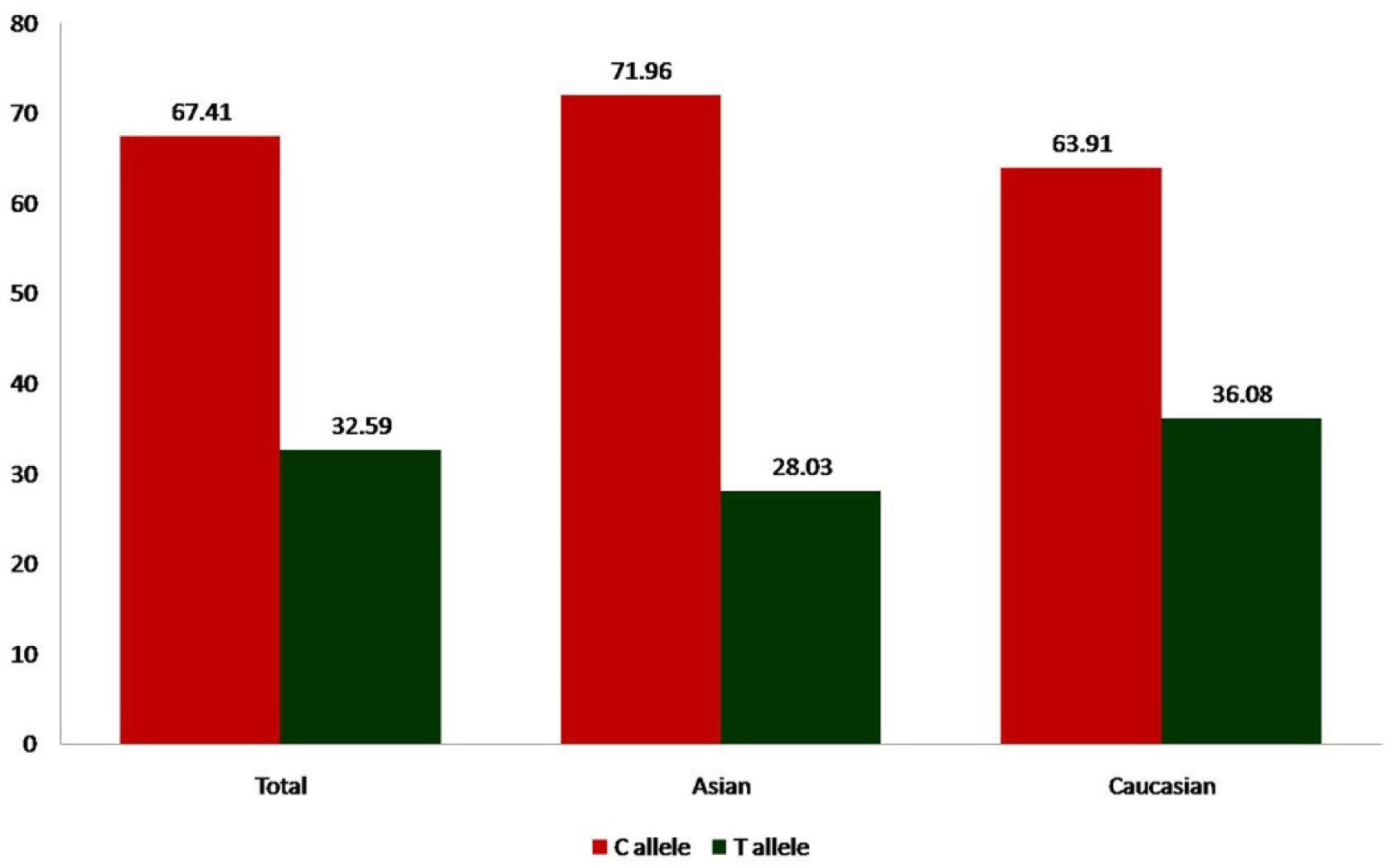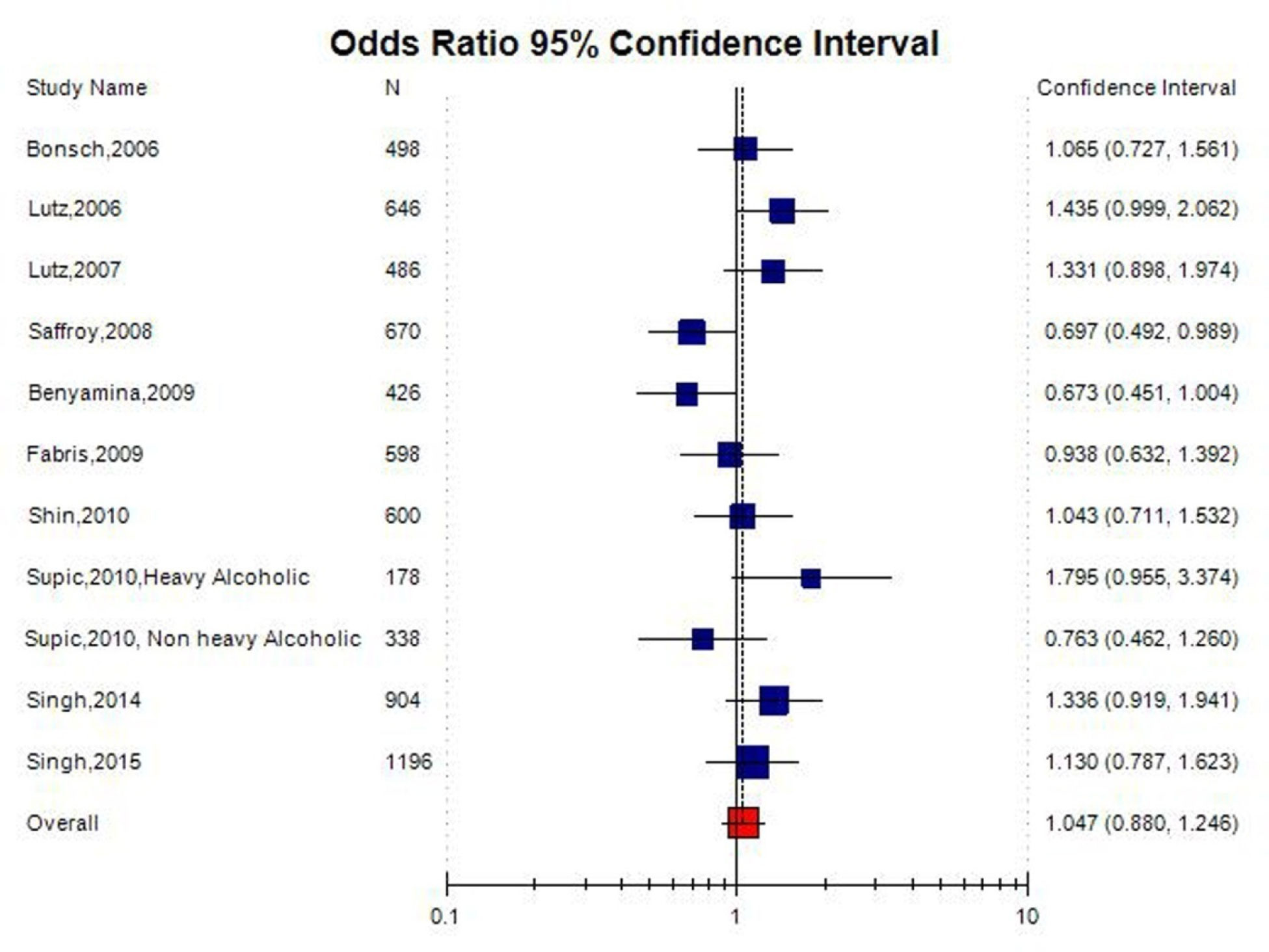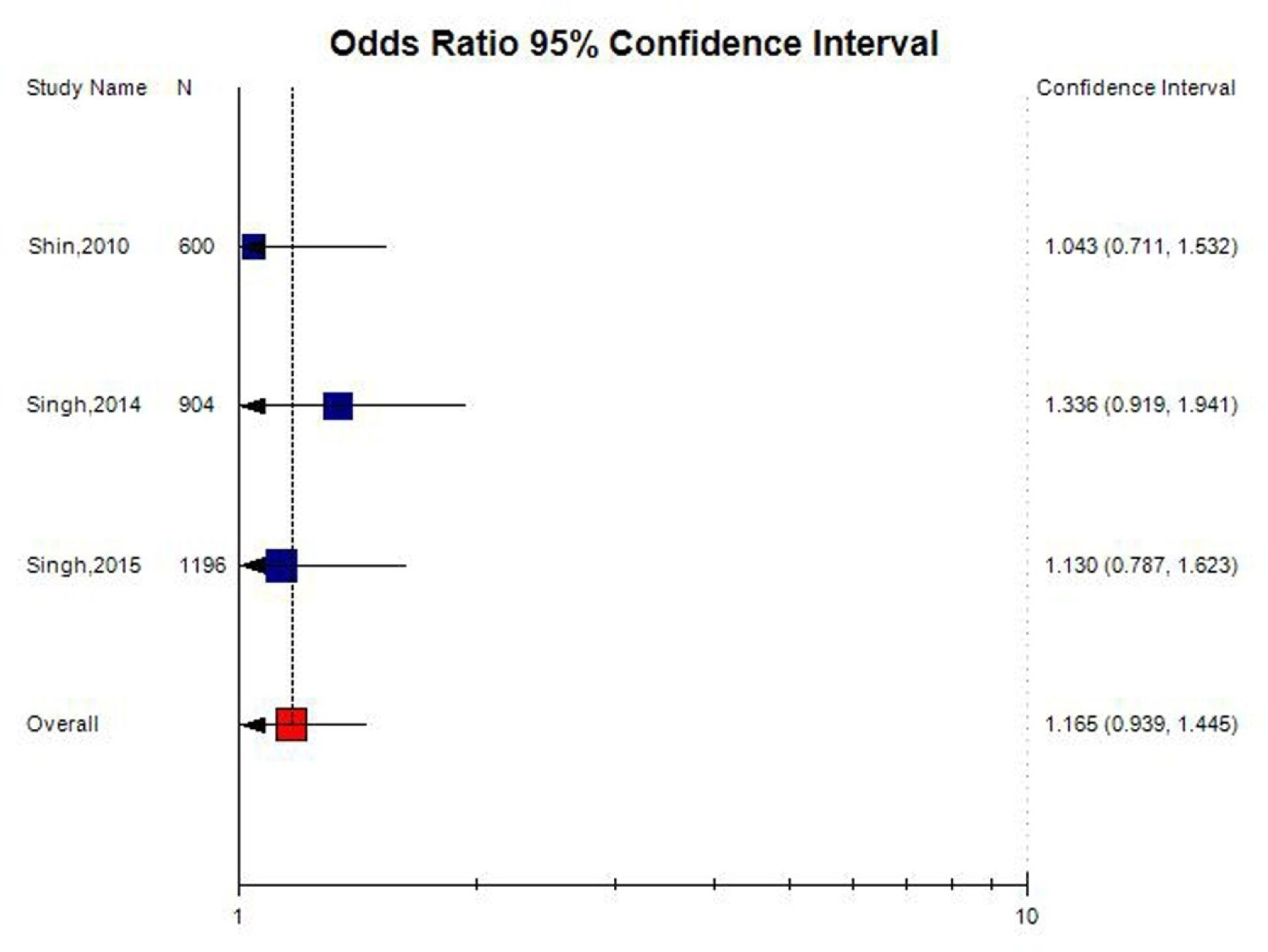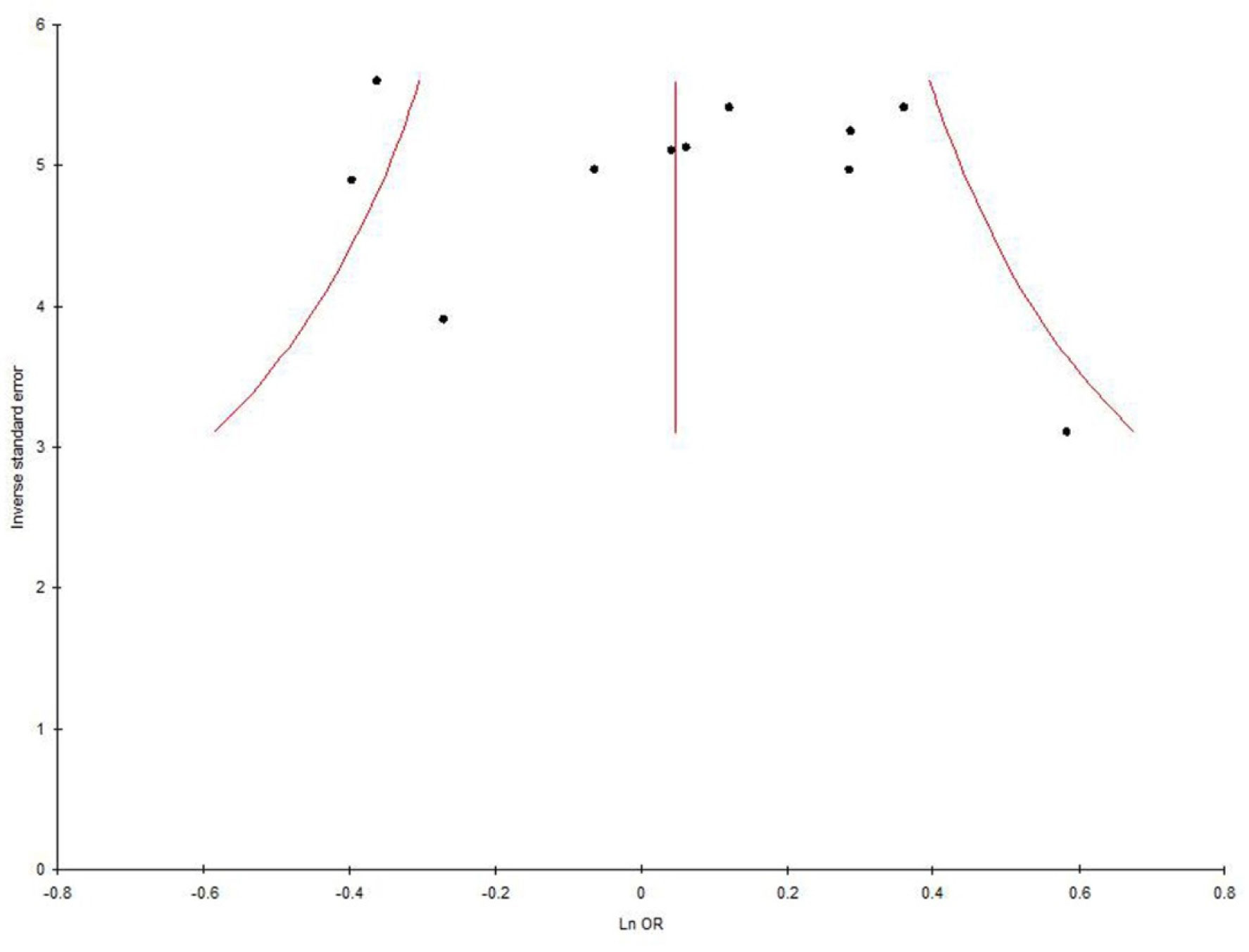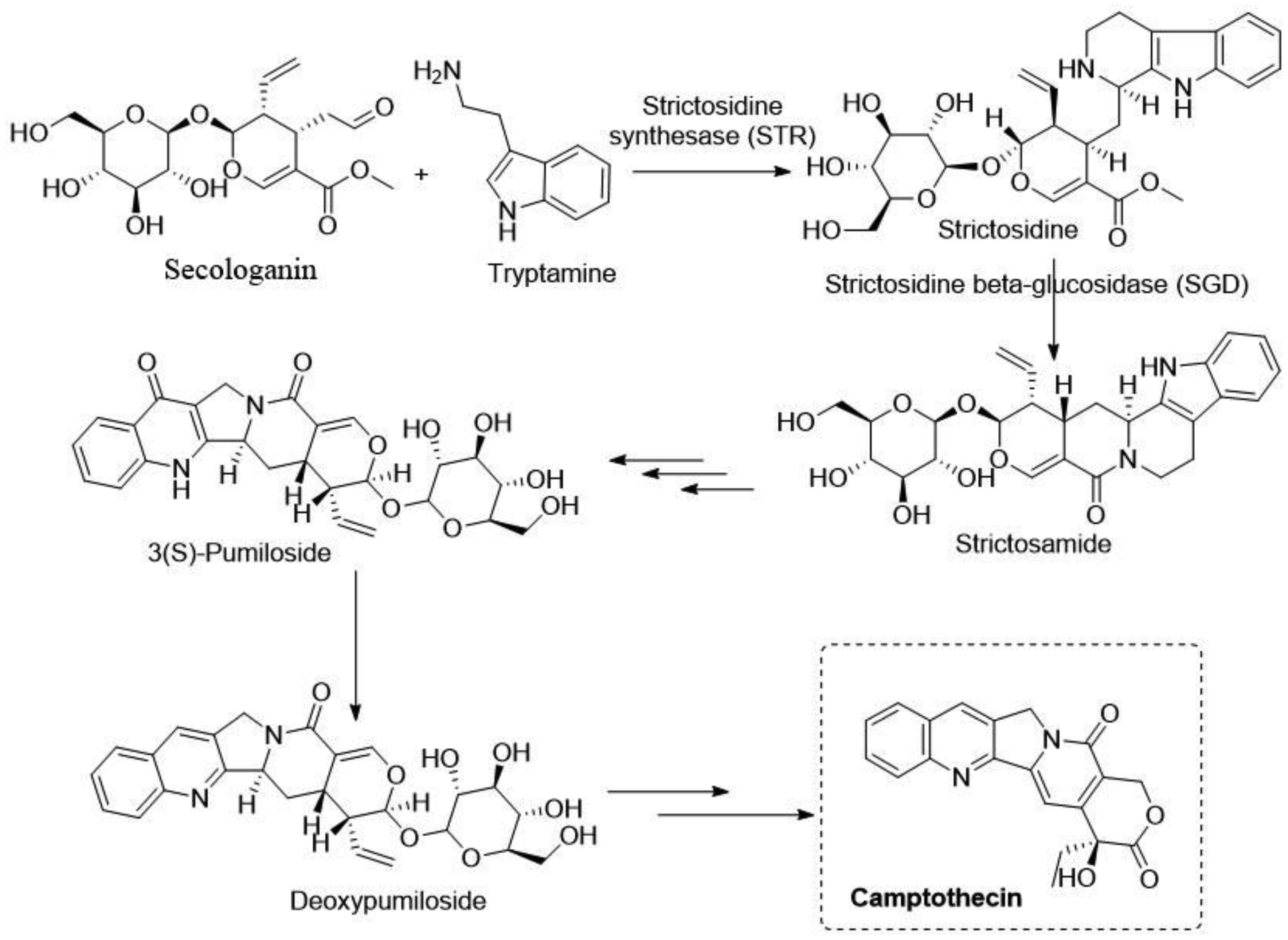|
[1]
|
Giavasis I (2014) Bioactive fungal polysaccharides as potential functional ingredients in food and nutraceuticals. Curr Opin Biotechnol 26: 162-173. https://doi.org/10.1016/j.copbio.2014.01.010 |
|
[2]
|
Boels D, Landreau A, Bruneau C, et al. (2014) Shiitake dermatitis recorded by French Poison Control Centers—new case series with clinical observations. Clin Toxicol 52: 625-628. https://doi.org/10.3109/15563650.2014.923905 |
|
[3]
|
Kamalebo HM, Nshimba Seya Wa Malale H, Ndabaga CM, et al. (2018) Uses and importance of wild fungi: Traditional knowledge from the Tshopo province in the Democratic Republic of the Congo. J EthnobiolEthnomed 14: 13. https://doi.org/10.1186/s13002-017-0203-6 |
|
[4]
|
Sánchez C (2017) Reactive oxygen species and antioxidant properties from mushrooms. Syn SystBiotechno 2: 13-22. https://doi.org/10.1016/j.synbio.2016.12.001 |
|
[5]
|
Souilem F, Fernandes Â, Calhelha RC, et al. (2017) Wild mushrooms and their mycelia as sources of bioactive compounds: Antioxidant, anti-inflammatory and cytotoxic properties. Food Chem 230: 40-48. https://doi.org/10.1016/j.foodchem.2017.03.026 |
|
[6]
|
Wasser SP, Sokolov D, Reshetnikov SV, et al. (2000) Dietary supplements from medicinal mushrooms: Diversity of types and variety of regulations. Int JMed Mushrooms 2: 19. https://doi.org/10.1615/IntJMedMushr.v2.i1.10 |
|
[7]
|
Agnihotri C, Aarzoo, Agnihotri S, et al. (2024) Mushroom bioactives: Traditional resources with nutraceutical importance. Traditional resources and tools for modern drug discovery. Singapore: Springer 617-639. https://doi.org/10.1007/978-981-97-4600-2_24 |
|
[8]
|
Araújo-Rodrigues AH, Sofia Sousa BA, Pintado CME (2022) Chapter 6: Macromolecules in fungi with pharmaceutical potential. Edible fungi: Chemical composition, nutrition and health effects.Royal society of chemistry 232-272. https://doi.org/10.1039/9781839167522-00232 |
|
[9]
|
Bell V, Silva CRPG, Guina J, et al. (2022) Mushrooms as future generation healthy foods. Front Nutr 9: 1050099. https://doi.org/10.3389/fnut.2022.1050099 |
|
[10]
|
Sousa AS, Araújo-Rodrigues H, Pintado ME (2023) The health-promoting potential of edible mushroom proteins. Curr Pharm Des 29: 804-823. https://doi.org/10.2174/1381612829666221223103756 |
|
[11]
|
Chang ST, Wasser SP (2012) The role of culinary-medicinal mushrooms on human welfare with a pyramid model for human health. Int J Med Mushrooms 14: 95-134. https://doi.org/10.1615/IntJMedMushr.v14.i2.10 |
|
[12]
|
Dan A, Swain R, Belonce S, et al. (2023) Therapeutic effects of medicinal mushrooms on gastric, breast, and colorectal cancer: A scoping review. Cureus 15: e37574. https://doi.org/10.7759/cureus.37574 |
|
[13]
|
Bizuayehu HM, Ahmed KY, Kibret GD, et al. (2024) Global disparities of cancer and its projected burden in 2050. JAMA Netw Open 7: e2443198. https://doi.org/10.1001/jamanetworkopen.2024.43198 |
|
[14]
|
Dizon DS, Kamal AH (2024) Cancer statistics 2024: All hands on deck. CA: A Cancer Journal for Clinicians 74: 8-9. https://doi.org/10.3322/caac.21824 |
|
[15]
|
De Luca MG, Roda F, Rossi P, et al. (2024) Medicinal mushrooms in metastatic breast cancer: What is their therapeutic potential as adjuvants in clinical settings?. Curr Issues Mol Biol 46: 7577-7591. https://doi.org/10.3390/cimb46070450 
|
|
[16]
|
De Luca F, Roda E, Ratto D, et al. (2023) Fighting secondary triple-negative breast cancer in the cerebellum: A powerful aid from a medicinal mushroom blend. Biomed Pharmacother 159: 114262. https://doi.org/10.1016/j.biopha.2023.114262 
|
|
[17]
|
Bray F, Ren JS, Masuyer E, et al. (2013) Global estimates of cancer prevalence for 27 sites in the adult population in 2008. Int J Cancer 132: 1133-1145. https://doi.org/10.1002/ijc.27711 |
|
[18]
|
Alavi M, Farkhondeh T, Aschner M, et al. (2021) Resveratrol mediates its anti-cancer effects by Nrf2 signaling pathway activation. Cancer Cell Int 21: 579. https://doi.org/10.1186/s12935-021-02280-5 |
|
[19]
|
Hendrix A, Yeo AE, Lejeune S, et al. (2020) Rare case of life-threatening thrombocytopenia occurring after radiotherapy in a patient treated with an immune checkpoint inhibitor. BMJ Case Reports 13: e235249. https://doi.org/10.1136/bcr-2020-235249 |
|
[20]
|
Abravan A, Faivre-Finn C, Kennedy J, et al. (2020) Radiotherapy-related lymphopenia affects overall survival in patients with lung cancer. J Thorac Oncol 15: 1624-1635. https://doi.org/10.1016/j.jtho.2020.06.008 |
|
[21]
|
Arnon J, Meirow D, Lewis-Roness H, et al. (2001) Genetic and teratogenic effects of cancer treatments on gametes and embryos. Hum Reprod Update 7: 394-403. https://doi.org/10.1093/humupd/7.4.394 |
|
[22]
|
Rosangkima G, Prasad SB (2004) Antitumor activity of some plants from Meghalaya and Mizoram against murine ascites Dalton's lymphoma. Indian J Exp Biol 42: 981-988. |
|
[23]
|
Sporn MB, Liby KT (2005) Cancer chemoprevention: Scientific promise, clinical uncertainty. Nat ClinPract Oncol 2: 518-525. https://doi.org/10.1038/ncponc0319 |
|
[24]
|
Araújo-Rodrigues H, Sousa AS, Relvas JB, et al. (2024) An overview on mushroom polysaccharides: Health-promoting properties, prebiotic and gut microbiota modulation effects, and structure-function correlation. CarbohydPolyme 333: 121978. https://doi.org/10.1016/j.carbpol.2024.121978 |
|
[25]
|
Buswell JA, Chang S (2024) Mushrooms: Fungi for all seasons. Acta Edulis Fungi 31: 11-30. |
|
[26]
|
Berretta M, Dal Lago L, Tinazzi M, et al. (2022) Evaluation of concomitant use of anticancer drugs and herbal products: From interactions to synergic activity. Cancers 14: 5203. https://doi.org/10.3390/cancers14215203 |
|
[27]
|
Chan WJJ, Adiwidjaja J, McLachlan AJ, et al. (2023) Interactions between natural products and cancer treatments: Underlying mechanisms and clinical importance. Cancer ChemotherPharmacol 91: 103-119. https://doi.org/10.1007/s00280-023-04504-z |
|
[28]
|
Habtemariam S (2019) The chemistry, pharmacology, and therapeutic potential of the edible mushroom Dictyophoraindusiata (Vent ex.Pers.) Fischer (syn. Phallus indusiatus). Biomedicines 7: 98. https://doi.org/10.3390/biomedicines7040098 |
|
[29]
|
Yuan S, Gopal JV, Ren S, et al. (2020) Anticancer fungal natural products: Mechanisms of action and biosynthesis. Eur J Med Chem 202: 112502. https://doi.org/10.1016/j.ejmech.2020.112502 |
|
[30]
|
Li YX, Himaya SWA, Dewapriya P, et al. (2013) Fumigaclavine C from a marine-derived fungus Aspergillus fumigatus induces apoptosis in MCF-7 breast cancer cells. Mar Drugs 11: 5063-5086. https://doi.org/10.3390/md11125063 |
|
[31]
|
Martirosyan A, Clendening JW, Goard CA, et al. (2010) Lovastatin induces apoptosis of ovarian cancer cells and synergizes with doxorubicin: Potential therapeutic relevance. BMC Cancer 10: 103. https://doi.org/10.1186/1471-2407-10-103 |
|
[32]
|
Siddiqui RA, Harvey KA, Xu Z, et al. (2014) Characterization of lovastatin–docosahexaenoate anticancer properties against breast cancer cells. Bioorgan Med Chem 22: 1899-1908. https://doi.org/10.1016/j.bmc.2014.01.051 |
|
[33]
|
Hou H, Zhou R, Li A, et al. (2014) Citreoviridin inhibits cell proliferation and enhances apoptosis of human umbilical vein endothelial cells. Environ Toxicol Phar 37: 828-836. https://doi.org/10.1016/j.etap.2014.02.016 |
|
[34]
|
Turbyville TJ, Wijeratne EMK, Liu MX, et al. (2006) Search for Hsp90 inhibitors with potential anticancer activity: Isolation and SAR studies of radicicol and monocillin I from two plant-associated fungi of the Sonoran desert. J Nat Prod 69: 178-184. https://doi.org/10.1021/np058095b |
|
[35]
|
Ishii S, Fujii M, Akita H (2009) First syntheses of (-)-tauranin and antibiotic (-)-BE-40644 based on lipase-catalyzed optical resolution of albicanol. Chem Pharm Bull 57: 1103-1106. https://doi.org/10.1248/cpb.57.1103 
|
|
[36]
|
Jørgensen H (2009) Analysis of genes for the biosynthesis of polyene macrocyclic compounds in streptomycetes isolated from the Trondheimsfjord. NTNU Open . |
|
[37]
|
Zhang J, Guo ZY, Shao CL, et al. (2022) Nigrosporins B, a potential anti-cervical cancer agent, induces apoptosis and protective autophagy in human cervical cancer Ca Ski cells mediated by PI3K/AKT/mTOR signaling pathway. Molecules 27: 2431. https://doi.org/10.3390/molecules27082431 
|
|
[38]
|
Staker BL, Hjerrild K, Feese MD, et al. (2002) The mechanism of topoisomerase I poisoning by a camptothecinanalog. Proc Natl Acad Sci USA 99: 15387-15392. https://doi.org/10.1073/pnas.242259599 
|
|
[39]
|
Liu YQ, Li WQ, Morris-Natschke SL, et al. (2015) Perspectives on biologically active camptothecin derivatives. Med Res Rev 35: 753-789. https://doi.org/10.1002/med.21342 
|
|
[40]
|
Nguyen DQ, Nguyen NL, Nguyen VT, et al. (2023) Isolation and identification of vincristine and vinblastine producing endophytic fungi from Catharanthus roseus (L.) G. Don. Russ J Plant Physiol 70: 188. https://doi.org/10.1134/S1021443723601507 
|
|
[41]
|
Mulac D, Lepski S, Ebert F, et al. (2013) Cytotoxicity and fluorescence visualization of ergot alkaloids in human cell lines. J Agric Food Chem 61: 462-471. https://doi.org/10.1021/jf304569q 
|
|
[42]
|
Pal AK, Pal S (2023) Endophytic fungi as a medicinal repository of potential therapeutic compounds. J Mycopathol Res 61: 15-20. https://doi.org/10.57023/JMycR.61.1.2023.015 |
|
[43]
|
Kim YS, Kim SK, Park SJ (2017) Apoptotic effect of demethoxyfumitremorgin C from marine fungus Aspergillus fumigatus on PC3 human prostate cancer cells. Chem-Biol Interact 269: 18-24. https://doi.org/10.1016/j.cbi.2017.03.015 
|
|
[44]
|
Islam F, Dehbia Z, Zehravi M, et al. (2023) Indole alkaloids from marine resources: Understandings from therapeutic point of view to treat cancers. Chem-Biol Interact 383: 110682. https://doi.org/10.1016/j.cbi.2023.110682 
|
|
[45]
|
Paschall AV, Yang D, Lu C, et al. (2015) H3K9 trimethylation silences Fas expression to confer colon carcinoma immune escape and 5-fluorouracil chemoresistance. J Immunol 195: 1868-1882. https://doi.org/10.4049/jimmunol.1402243 
|
|
[46]
|
Pierre HC, Amrine CSM, Doyle MG, et al. (2024) Verticillins: Fungal epipolythiodioxopiperazine alkaloids with chemotherapeutic potential. Nat Prod Rep 41: 1327-1345. https://doi.org/10.1039/D3NP00068K 
|
|
[47]
|
Doi Y, Wakana D, Kitaoka S, et al. (2022) Secalonic acid and benzoic acid analogues exhibiting cytotoxicity against cancer cells isolated from Claviceps yanagawaensis. Adv Microbiol 12: 649-670. https://doi.org/10.4236/aim.2022.1212045 
|
|
[48]
|
Meng Q, Li BX, Xiao X (2018) Toward developing chemical modulators of Hsp60 as potential therapeutics. Front Mol Biosci 5: 35. 
|
|
[49]
|
Kassab MM (2023) Screening and production of fungal L-asparaginase enzymes as anticancer agents from high-contrast soil environments in Egypt. Egypt Acad J Biolog Sci G Microbiolog 15: 21-41. |
|
[50]
|
Tiberghien F, Kurome T, Takesako K, et al. (2000) Aureobasidins: Structure−activity relationships for the inhibition of the human MDR1 P-glycoprotein ABC-transporter. J Med Chem 43: 2547-2556. https://doi.org/10.1021/jm990955w 
|
|
[51]
|
López-Legarda X, Rostro-Alanis M, Parra-Saldivar R, et al. (2021) Submerged cultivation, characterization and in vitro antitumor activity of polysaccharides from Schizophyllumradiatum. Int J Biol Macromol 186: 919-932. https://doi.org/10.1016/j.ijbiomac.2021.07.084 
|
|
[52]
|
Pirzadeh-Naeeni S, Mozdianfard MR, Shojaosadati SA, et al. (2020) A comparative study on schizophyllan and chitin nanoparticles for ellagic acid delivery in treating breast cancer. Int J Biol Macromol 144: 380-388. https://doi.org/10.1016/j.ijbiomac.2019.12.079 
|
|
[53]
|
Gallego-Jara J, Lozano-Terol G, Sola-Martínez RA, et al. (2020) A comprehensive review about Taxol®: History and future challenges. Molecules 25: 5986. https://doi.org/10.3390/molecules25245986 
|
|
[54]
|
Gond SK, Kharwar RN, White JF (2014) Will fungi be the new source of the blockbuster drug Taxol?. Fungal Biol Rev 28: 77-84. https://doi.org/10.1016/j.fbr.2014.10.001 
|
|
[55]
|
Yang X, Wu P, Xue J, et al. (2023) Seco-pimarane diterpenoids and androstane steroids from an endophytic Nodulisporium fungus derived from Cyclosorusparasiticus. Phytochemistry 210: 113679. https://doi.org/10.1016/j.phytochem.2023.113679 
|
|
[56]
|
Cadar E, Negreanu-Pirjol T, Pascale C, et al. (2023) Natural bio-compounds from Ganoderma lucidum and their beneficial biological actions for anticancer application: A review. Antioxidants 12: 1907. https://doi.org/10.3390/antiox12111907 
|
|
[57]
|
Guo C, Dai H, Zhang M, et al. (2022) Molecular networking assisted discovery and combinatorial biosynthesis of new antimicrobial pleuromutilins. Eur J Med Chem 243: 114713. https://doi.org/10.1016/j.ejmech.2022.114713 
|
|
[58]
|
Evidente A (2024) The incredible story of ophiobolin A and sphaeropsidin A: Two fungal terpenes from wilt-inducing phytotoxins to promising anticancer compounds. Nat Prod Rep 41: 434-468. https://doi.org/10.1039/D3NP00035D 
|
|
[59]
|
Zheng Q, Sun J, Li W, et al. (2020) Cordycepin induces apoptosis in human tongue cancer cells in vitro and has antitumor effects in vivo. Arch Oral Biol 118: 104846. https://doi.org/10.1016/j.archoralbio.2020.104846 
|
|
[60]
|
Xiang M, Kim H, Ho VT, et al. (2016) Gene expression–based discovery of atovaquone as a STAT3 inhibitor and anticancer agent. Blood 128: 1845-1853. https://doi.org/10.1182/blood-2015-07-660506 
|
|
[61]
|
Cheng L, Yan B, Chen K, et al. (2018) Resveratrol-induced downregulation of NAF-1 enhances the sensitivity of pancreatic cancer cells to gemcitabine via the ROS/Nrf2 signaling pathways. Oxid Med Cell Longev 2018: 9482018. https://doi.org/10.1155/2018/9482018 
|
|
[62]
|
Gangwar C, Yaseen B, Nayak R, et al. (2022) Silver nanoparticles fabricated by tannic acid for their antimicrobial and anticancerous activity. Inorg Chem Commun 141: 109532. https://doi.org/10.1016/j.inoche.2022.109532 
|
|
[63]
|
Naidu SD, Dinkova-Kostova AT (2017) Regulation of the mammalian heat shock factor 1. FEBS J 284: 1606-1627. https://doi.org/10.1111/febs.13999 
|
|
[64]
|
Carroll G (1988) Fungal endophytes in stems and leaves: From latent pathogen to mutualistic symbiont. Ecology 69: 2-9. https://doi.org/10.2307/1943154 
|
|
[65]
|
Zhao J, Shan T, Mou Y, et al. (2011) Plant-derived bioactive compounds produced by endophytic fungi. Mini-Rev Med Chem 11: 159-168. https://doi.org/10.2174/138955711794519492 
|
|
[66]
|
Monacelli B, Valletta A, Rascio N, et al. (2005) Laticifers in Camptotheca acuminate Decne: Distribution and structure. Protoplasma 226: 155-161. https://doi.org/10.1007/s00709-005-0118-2 
|
|
[67]
|
Ran X, Zhang G, Li S, et al. (2017) Characterization and antitumor activity of camptothecin from endophytic fungus Fusarium solani isolated from Camptotheca acuminata. Afr Health Sci 17: 566-574. https://doi.org/10.4314/ahs.v17i2.34 
|
|
[68]
|
Kumar A (2016) Vincristine and vinblastine: A review. IJMPS : 23-30. |
|
[69]
|
Goodbody A, Endo T, Vukovic J, et al. (1988) The coupling of catharanthine and vindoline to form 3′,4′-anhydrovinblastine by haemoproteins and haemin. Planta Med 54: 210-214. 
|
|
[70]
|
Kutchan TM (1995) Alkaloid biosynthesis—the basis for metabolic engineering of medicinal plants. Plant Cell 7: 1059-1070. https://doi.org/10.1105/tpc.7.7.1059 
|
|
[71]
|
Kalidass A, Mohan VR, Daniel C (2009) Effect of auxin and cytokinin on vincristine production by callus cultures of Catharanthus roseus L. (Apocynaceae). Trop SubtropicalAgroecosys 12: 283-288. |
|
[72]
|
Ramezani A, Haddad R, Sedaghati B, et al. (2018) Effects of fungal extracts on vinblastine and vincristine production and their biosynthesis pathway genes in Catharanthus roseus. S Afr J Bot 119: 163-171. https://doi.org/10.1016/j.sajb.2018.08.015 
|
|
[73]
|
Mrusek M, Seo EJ, Greten HJ, et al. (2015) Identification of cellular and molecular factors determining the response of cancer cells to six ergot alkaloids. Invest New Drugs 33: 32-44. https://doi.org/10.1007/s10637-014-0168-4 
|
|
[74]
|
Tudzynski P, Correia T, Keller U (2001) Biotechnology and genetics of ergot alkaloids. Appl Microbiol Biotechnol 57: 593-605. https://doi.org/10.1007/s002530100801 
|
|
[75]
|
Coyle CM, Panaccione DG (2005) An ergot alkaloid biosynthesis gene and clustered hypothetical genes from Aspergillus fumigatus. Appl Environ Microbiol 71: 3112-3118. https://doi.org/10.1128/AEM.71.6.3112-3118.2005 
|
|
[76]
|
Song J, Zhang B, Li M, et al. (2023) The current scenario of naturally occurring indole alkaloids with anticancer potential. Fitoterapia 165: 105430. https://doi.org/10.1016/j.fitote.2023.105430 
|
|
[77]
|
Peng F, Hou SY, Zhang TY, et al. (2019) Cytotoxic and antimicrobial indole alkaloids from an endophytic fungus Chaetomium sp. SYP-F7950 of Panax notoginseng. RSC Adv 9: 28754-28763. https://doi.org/10.1039/C9RA04747F 
|
|
[78]
|
Ding Y, de Wet JR, Cavalcoli J, et al. (2010) Genome-based characterization of two prenylation steps in the assembly of the stephacidin and notoamide anticancer agents in a marine-derived Aspergillus sp. J Am Chem Soc 132: 12733-12740. https://doi.org/10.1021/ja1049302 
|
|
[79]
|
Salvi A, Amrine CSM, Austin JR, et al. (2020) Verticillin A causes apoptosis and reduces tumor burden in high-grade serous ovarian cancer by inducing DNA damage. Mol Cancer Ther 19: 89-100. https://doi.org/10.1158/1535-7163.MCT-19-0205 
|
|
[80]
|
Strobel GA, Torczynski R, Bollon A (1997) Acremonium sp.—Aleucinostatin A producing endophyte of European yew (Taxus baccata). Plant Sci 128: 97-108. https://doi.org/10.1016/S0168-9452(97)00131-3 
|
|
[81]
|
Moharib SA (2018) Anticancer activity of L-asparaginase produced from Vigna unguiculata. World Sci Res 5: 1-12. https://doi.org/10.20448/journal.510.2018.51.1.12 |
|
[82]
|
Hassan SWM, Farag AM, Beltagy EA (2018) Purification, characterization, and anticancer activity of L-asparaginase produced by marine Aspergillus terreus. J Pure Appl Microbiol 12: 1845-1854. https://doi.org/10.22207/JPAM.12.4.19 
|
|
[83]
|
Wang LG, Liu XM, Kreis W, et al. (1999) The effect of antimicrotubule agents on signal transduction pathways of apoptosis: A review. Cancer Chemother Pharmacol 44: 355-361. https://doi.org/10.1007/s002800050989 
|
|
[84]
|
Robinson DR, Wu YM, Lonigro RJ, et al. (2017) Integrative clinical genomics of metastatic cancer. Nature 548: 297-303. https://doi.org/10.1038/nature23306 
|
|
[85]
|
Nakamura K, Shinozuka K, Yoshikawa N (2015) Anticancer and antimetastatic effects of cordycepin, an active component of Cordyceps sinensis. J Pharmacol Sci 127: 53-56. https://doi.org/10.1016/j.jphs.2014.09.001 
|
|
[86]
|
Tao X, Ning Y, Zhao X, et al. (2016) The effects of cordycepin on the cell proliferation, migration, and apoptosis in human lung cancer cell lines A549 and NCI-H460. J Pharm Pharmacol 68: 901-911. https://doi.org/10.1111/jphp.12544 
|
|
[87]
|
Wong JH, Ng TB, Chan HHL, et al. (2020) Mushroom extracts and compounds with suppressive action on breast cancer: evidence from studies using cultured cancer cells, tumor-bearing animals, and clinical trials. Appl Microbiol Biotechnol 104: 4675-4703. https://doi.org/10.1007/s00253-020-10476-4 
|
|
[88]
|
Gill BS, Kumar S, Navgeet (2018) Ganoderic acid A targeting β-catenin in Wntsignaling pathway: In silico and in vitro study. Interdiscip Sci Comput Life Sci 10: 233-243. https://doi.org/10.1007/s12539-016-0182-7 
|
|
[89]
|
Gill BS, Navgeet, Mehra R, et al. (2018) Ganoderic acid, lanostanoid triterpene: A key player in apoptosis. Invest New Drugs 36: 136-143. https://doi.org/10.1007/s10637-017-0526-0 
|
|
[90]
|
Jiang J, Grieb B, Thyagarajan A, Sliva D (2008) Ganoderic acids suppress growth and invasive behavior of breast cancer cells by modulating AP-1 and NF-κB signaling. Int J Mol Med 21: 577-584. |
|
[91]
|
Yamane M, Minami A, Liu C, et al. (2017) Biosynthetic machinery of diterpene pleuromutilin isolated from basidiomycete fungi. Chem Bio Chem 18: 2317-2322. https://doi.org/10.1002/cbic.201700434 
|
|
[92]
|
Uzma F, Mohan CD, Hashem A, et al. (2018) Endophytic fungi—alternative sources of cytotoxic compounds: A review. Front Pharmacol 9: 309. 
|
|
[93]
|
Nadeem M, Ram M, Alam P, et al. (2012) Fusarium solani, P1, a new endophyticpodophyllotoxin-producing fungus from roots of Podophyllum hexandrum. Afr J Microbiol Res 6: 2493-2499. |
|
[94]
|
Shi J, Zeng Q, Liu Y, et al. (2012) Alternaria sp. MG1, a resveratrol-producing fungus: isolation, identification, and optimal cultivation conditions for resveratrol production. Appl Microbiol Biotechnol 95: 369-379. https://doi.org/10.1007/s00253-012-4045-9 
|
|
[95]
|
Guruceaga X, Perez-Cuesta U, de Cerio AAD, et al. (2019) Fumagillin, a mycotoxin of Aspergillus fumigatus: biosynthesis, biological activities, detection, and applications. Toxins 12: 7. https://doi.org/10.3390/toxins12010007 
|
|
[96]
|
National Center for Biotechnology Information (NCBI)PubChem Compound Summary for CID 6917655, Fumagillin (2025). Available from: https://pubchem.ncbi.nlm.nih.gov/compound/6917655 |
|
[97]
|
Khandelwal KA, Han S, Won YW, et al. (2021) Complex interactions of lovastatin with 10 chemotherapeutic drugs: A rigorous evaluation of synergism and antagonism. BMC Cancer 21: 356. https://doi.org/10.1186/s12885-021-07963-w 
|
|
[98]
|
Ma HT, Poon RYC (2017) Synchronization of HeLa cells. Cell cycle synchronization. New York: Humana Press 189-201. https://doi.org/10.1007/978-1-4939-6603-5_12 |
|
[99]
|
Ikuina Y, Amishiro N, Miyata M, et al. (2003) Synthesis and antitumor activity of novel O-carbamoylmethyloxime derivatives of radicicol. J Med Chem 46: 2534-2541. https://doi.org/10.1021/jm030110r 
|
|
[100]
|
Soga S, Shiotsu Y, Akinaga S, et al. (2003) Development of radicicol analogues. Curr Cancer Drug Tar 3: 359-369. https://doi.org/10.2174/1568009033481859 
|
|
[101]
|
Newman DJ, Cragg GM (2007) Natural products as sources of new drugs over the last 25 years. J Nat Prod 70: 461-477. https://doi.org/10.1021/np068054v 
|
|
[102]
|
Kusari S, Hertweck C, Spiteller M (2012) Chemical ecology of endophytic fungi: Origins of secondary metabolites. Chem Biol 19: 792-798. https://doi.org/10.1016/j.chembiol.2012.06.004 
|
|
[103]
|
Kusari S, Zühlke S, Spiteller M (2009) An endophytic fungus from Camptotheca acuminata that produces camptothecin and analogues. J Nat Prod 72: 2-7. https://doi.org/10.1021/np800455b 
|
|
[104]
|
Demain AL, Vaishnav P (2011) Natural products for cancer chemotherapy. MicrobBiotechnol 4: 687-699. https://doi.org/10.1111/j.1751-7915.2010.00221.x |
|
[105]
|
Xie S, Zhou J (2017) Harnessing plant biodiversity for the discovery of novel anticancer drugs targeting microtubules. Front Plant Sci 8: 720. https://doi.org/10.3389/fpls.2017.00720 
|
|
[106]
|
Lei M, Ribeiro H, Kolodin G, et al. (2013) Establishing a high-throughput and automated cancer cell proliferation panel for oncology lead optimization. SLAS Discov 18: 1043-1053. https://doi.org/10.1177/1087057113491825 
|
|
[107]
|
Aly AH, Edrada-Ebel R, Indriani ID, et al. (2008) Cytotoxic metabolites from the fungal endophyte Alternaria sp. and their subsequent detection in its host plant Polygonum senegalense. J Nat Prod 71: 972-980. https://doi.org/10.1021/np070447m 
|
|
[108]
|
Salvador-Reyes LA, Luesch H (2015) Biological targets and mechanisms of action of natural products from marine cyanobacteria. Nat Prod Rep 32: 478-503. https://doi.org/10.1039/C4NP00104D 
|
|
[109]
|
Stierle AA, Stierle DB (2015) Bioactive secondary metabolites produced by the fungal endophytes of conifers. Nat Prod Commun 10: 1671-1682. |
|
[110]
|
Balunas MJ, Kinghorn AD (2005) Drug discovery from medicinal plants. Life Sci 78: 431-441. https://doi.org/10.1016/j.lfs.2005.09.012 
|
|
[111]
|
Saltz L, Shimada Y, Khayat D (1996) CPT-11 (irinotecan) and 5-fluorouracil: A promising combination for therapy of colorectal cancer. Eur J Cancer 32: S24-31. https://doi.org/10.1016/0959-8049(96)00294-8 
|
|
[112]
|
Mei C, Lei L, Tan LM, et al. (2020) The role of single strand break repair pathways in cellular responses to camptothecin induced DNA damage. Biomed Pharmacother 125: 109875. https://doi.org/10.1016/j.biopha.2020.109875 
|
|
[113]
|
Li M, Wang L, Wei Y, et al. (2022) Anti-colorectal cancer effects of a novel camptothecin derivative PCC0208037 in vitro and in vivo. Pharmaceuticals 16: 53. https://doi.org/10.3390/ph16010053 
|
|
[114]
|
Kaur P, Kumar V, Singh R, et al. (2020) Biotechnological strategies for production of camptothecin from fungal and bacterial endophytes. South Afr J Bot 134: 135-145. https://doi.org/10.1016/j.sajb.2020.07.001 
|
|
[115]
|
Banadka A, Narasimha SW, Dandin VS, et al. (2024) Biotechnological approaches for the production of camptothecin. Appl Microbiol Biotechnol 108: 382. https://doi.org/10.1007/s00253-024-13187-2 
|
|
[116]
|
Bates D, Eastman A (2017) Microtubuledestabilizing agents: Far more than just antimitotic anticancer drugs. Br J Clin Pharmacol 83: 255-268. https://doi.org/10.1111/bcp.13126 
|
|
[117]
|
Javeed A, Ashraf M, Riaz A, et al. (2009) Paclitaxel and immune system. Eur J Pharm Sci 38: 283-290. https://doi.org/10.1016/j.ejps.2009.08.009 
|
|
[118]
|
Lim PT, Goh BH, Lee WL (2022) Taxol: Mechanisms of action against cancer, an update with current research. Paclitaxel.Elsevier 47-71. https://doi.org/10.1016/B978-0-323-90951-8.00007-2 
|
|
[119]
|
Kusari S, Singh S, Jayabaskaran C (2014) Rethinking production of Taxol® (paclitaxel) using endophyte biotechnology. Trends Biotechnol 32: 304-311. https://doi.org/10.1016/j.tibtech.2014.03.011 
|
|
[120]
|
Zerbe P (2024) Plants against cancer: Towards green Taxol production through pathway discovery and metabolic engineering. aBIOTECH 5: 394-402. https://doi.org/10.1007/s42994-024-00170-8 
|
|
[121]
|
Wong YY, Moon A, Duffin R, et al. (2010) Cordycepin inhibits protein synthesis and cell adhesion through effects on signal transduction. J Biol Chem 285: 2610-2621. https://doi.org/10.1074/jbc.M109.071159 
|
|
[122]
|
Jin Y, Meng X, Qiu Z, et al. (2018) Anti-tumor and anti-metastatic roles of cordycepin, one bioactive compound of Cordyceps militaris. Saudi J Biol Sci 25: 991-995. https://doi.org/10.1016/j.sjbs.2018.05.016 
|
|
[123]
|
Hwang IH, Oh SY, Jang HJ, et al. (2017) Cordycepin promotes apoptosis in renal carcinoma cells by activating the MKK7-JNK signaling pathway through inhibition of c-FLIPL expression. PLoS One 12: e0186489. https://doi.org/10.1371/journal.pone.0186489 
|
|
[124]
|
Hsu PY, Lin YH, Yeh EL, et al. (2017) Cordycepin and a preparation from Cordyceps militaris inhibit malignant transformation and proliferation by decreasing EGFR and IL-17RA signaling in a murine oral cancer model. Oncotarget 8: 93712-93728. https://doi.org/10.18632/oncotarget.21477 
|
|
[125]
|
Joo JC, Hwang JH, Jo E, et al. (2017) Cordycepin induces apoptosis by caveolin-1-mediated JNK regulation of Foxo3a in human lung adenocarcinoma. Oncotarget 8: 12211-12224. https://doi.org/10.18632/oncotarget.14661 
|
|
[126]
|
Wu X, Wu T, Huang A, et al. (2021) New insights into the biosynthesis of typical bioactive components in the traditional Chinese medicinal fungus Cordyceps militaris. Front Bioeng Biotechnol 9: 801721. https://doi.org/10.3389/fbioe.2021.801721 |
|
[127]
|
Yoo CH, Sadat MA, Kim W, et al. (2022) Comprehensive transcriptomic analysis of Cordyceps militaris cultivated on germinated soybeans. Mycobiology 50: 1-11. https://doi.org/10.1080/12298093.2022.2035906 
|
|
[128]
|
Frottin F, Bienvenut WV, Bignon J, et al. (2016) MetAP1 and MetAP2 drive cell selectivity for a potent anti-cancer agent in synergy, by controlling glutathione redox state. Oncotarget 7: 63306-63323. https://doi.org/10.18632/oncotarget.11216 
|
|
[129]
|
Lin HC, Chooi YH, Dhingra S, et al. (2013) The fumagillin biosynthetic gene cluster in Aspergillus fumigatus encodes a cryptic terpene cyclase involved in the formation of β-trans-Bergamotene. J Am Chem Soc 135: 4616-4619. https://doi.org/10.1021/ja312503y 
|
|
[130]
|
Zhang Y, Yeh JR, Mara A, et al. (2006) A chemical and genetic approach to the mode of action of fumagillin. Chem Biol 13: 1001-1009. https://doi.org/10.1016/j.chembiol.2006.07.010 
|
|
[131]
|
Yang T, Yao H, He G, et al. (2016) Effects of lovastatin on MDA-MB-231 breast cancer cells: An antibody microarray analysis. J Cancer 7: 192-199. https://doi.org/10.7150/jca.13414 
|
|
[132]
|
Maksimova E, Yie TA, Rom WN (2008) In vitro mechanisms of lovastatin on lung cancer cell lines as a potential chemo preventive eagent. Lung 186: 45-54. https://doi.org/10.1007/s00408-007-9053-7 
|
|
[133]
|
Ames BD, Nguyen C, Bruegger J, et al. (2012) Crystal structure and biochemical studies of the trans-acting polyketide enoyl reductase LovC from lovastatin biosynthesis. Proc Natl Acad Sci USA 109: 11144-11149. https://doi.org/10.1073/pnas.1113029109 
|
|
[134]
|
Zhang Y, Chen Z, Wen Q, et al. (2020) An overview on the biosynthesis and metabolic regulation of monacolin K/Lovastatin. Food Funct 11: 5738-5748. https://doi.org/10.1039/D0FO00691B 
|
|
[135]
|
Sun X, Xu Q, Zeng L, et al. (2020) Resveratrol suppresses the growth and metastatic potential of cervical cancer by inhibiting STAT3Tyr705 phosphorylation. Cancer Medicine 9: 8685-8700. https://doi.org/10.1002/cam4.3510 
|
|
[136]
|
Brockmueller A, Girisa S, Kunnumakkara AB, et al. (2023) Resveratrol modulates chemosensitization to 5-FU via β1-Integrin/HIF-1α axis in CRC tumor microenvironment. Int J Mol Sci 24: 4988. https://doi.org/10.3390/ijms24054988 
|
|
[137]
|
Li J, Fan Y, Zhang Y, et al. (2022) Resveratrol induces autophagy and apoptosis in non-small-cell lung cancer cells by activating the NGFR-AMPK-mTOR pathway. Nutrients 14: 2413. https://doi.org/10.3390/nu14122413 
|
|
[138]
|
Meng T, Xiao D, Muhammed A, et al. (2021) Anti-inflammatory action and mechanisms of resveratrol. Molecules 26: 229. https://doi.org/10.3390/molecules26010229 
|
|
[139]
|
Abo-Kadoum MA, Abouelela ME, Al Mousa AA, et al. (2022) Resveratrol biosynthesis, optimization, induction, biotransformation and biodegradation in mycoendophytes. Front Microbiol 13: 010332. https://doi.org/10.3389/fmicb.2022.1010332 |
|
[140]
|
Schwab W, Lange BM, Wüst M (2018) Biotechnology of natural products.Springer. https://doi.org/10.1007/978-3-319-67903-7 
|
|
[141]
|
Groth-Pedersen L, Ostenfeld MS, Høyer-Hansen M, et al. (2007) Vincristine induces dramatic lysosomal changes and sensitizes cancer cells to lysosome-destabilizing siramesine. Cancer Res 67: 2217-2225. https://doi.org/10.1158/0008-5472.CAN-06-3520 
|
|
[142]
|
Bates D, Eastman A (2017) Microtubule destabilizing agents: Far more than just antimitotic anticancer drugs. Brit J Clini Pharmaco 8: 255-268. https://doi.org/10.1111/bcp.13126 
|
|
[143]
|
Pandey SS, Singh S, Babu CSV, et al. (2016) Fungal endophytes of Catharanthus roseusenhance vindoline content by modulating structural and regulatory genes related to terpenoid indole alkaloid biosynthesis. Sci Rep 6: 26583. https://doi.org/10.1038/srep26583 
|
|
[144]
|
Ye L (2015) Synthetic strategies in molecular imprinting. Molecularly imprinted polymers in biotechnology. Cham: Springer 1-24. https://doi.org/10.1007/10_2015_313 |
|
[145]
|
Gao D, Liu T, Gao J, et al. (2022) De Novobiosynthesis of vindoline and catharanthine in Saccharomyces cerevisiae. Bio Design Res 2022: 0022. https://doi.org/10.34133/bdr.0002 |
|
[146]
|
Jeitler M, Michalsen A, Frings D, et al. (2020) Significance of medicinal mushrooms in integrative oncology: A narrative review. Front Pharmacol 11: 580656. https://doi.org/10.3389/fphar.2020.580656 
|
|
[147]
|
Grant SJ, Hunter J, Seely, D, et al. (2019) Integrative oncology: International perspectives. Integr Cancer Ther 18: 1-11. https://doi.org/10.1177/1534735418823266 
|
|
[148]
|
Plácido AI, Roque F, Morgado M (2022) The promising role of mushrooms as a therapeutic adjuvant of conventional cancer therapies. Biologics 2: 58-68. https://doi.org/10.3390/biologics2010005 
|
|
[149]
|
Tsai MY, Hung YC, Chen YH, et al. (2016) A preliminary randomised controlled study of short-term Antrodiacinnamomea treatment combined with chemotherapy for patients with advanced cancer. BMC Complement Altern Med 16: 322. https://doi.org/10.1186/s12906-016-1312-9 
|
|
[150]
|
Tsao SM, Hsu HY (2016) Fucose-containing fraction of Ling-Zhi enhances lipid raft-dependent ubiquitination of TGFβ receptor degradation and attenuates breast cancer tumorigenesis. Sci Rep 6: 36563. https://doi.org/10.1038/srep36563 
|
|
[151]
|
Roldan-Deamicis A, Alonso E, Brie B, et al. (2016) Maitake Pro4X has anti-cancer activity and prevents oncogenesis in BALB/c mice. Cancer Med 5: 2427-2441. https://doi.org/10.1002/cam4.744 
|
|
[152]
|
Gou Y, Zheng X, Li W, et al. (2022) Polysaccharides produced by the mushroom Trametes robiniophila Murrboost the sensitivity of hepatoma cells to oxaliplatin via the miR-224-5p/ABCB1/P-gpaxis. Integr Cancer Ther 21. https://doi.org/10.1177/15347354221090221 |
|
[153]
|
Xu WW, Li B, Lai ETC, et al. (2014) Water extract from Pleurotus pulmonarius with antioxidant activity exerts in vivochemoprophylaxis and chemosensitization for liver cancer. Nutr Cancer 66: 989-998. https://doi.org/10.1080/01635581.2014.936950 
|
|
[154]
|
Cen K, Chen M, He M, et al. (2022) Sporoderm-broken spores of Ganoderma lucidum sensitize ovarian cancer to cisplatin by ROS/ERK signaling and attenuate chemotherapy-related toxicity. Front Pharmacol 13: 826716. https://doi.org/10.3389/fphar.2022.826716 
|
|
[155]
|
De Luca F, Roda E, Ratto D, et al. (2023) Fighting secondary triple-negative breast cancer in cerebellum: A powerful aid from a medicinal mushrooms blend. Biomed Pharmacother 159: 114262. https://doi.org/10.1016/j.biopha.2023.114262 
|
|
[156]
|
Lyons MJ, Ehrhardt C, Walsh JJ (2023) Orellanine: From fungal origin to a potential future cancer treatment. J Natural Prod 86: 1620-1631. https://doi.org/10.1021/acs.jnatprod.2c01068 
|
|
[157]
|
Ling T, Arroyo-Cruz LV, Smither WR, et al. (2024) Early preclinical studies of ergosterol peroxide and biological evaluation of its derivatives. ACS Omega 9: 37117-37127. https://doi.org/10.1021/acsomega.4c04350 
|
|
[158]
|
Panda SK, Sahoo G, Swain SS, et al. (2022) Anticancer activities of mushrooms: A neglected source for drug discovery. Pharmaceuticals 15: 176. https://doi.org/10.3390/ph15020176 
|
|
[159]
|
Zhao H, Zhang Q, Zhao L, et al. (2012) Spore powder of Ganoderma lucidum improves cancer-related fatigue in breast cancer patients undergoing endocrine therapy: A pilot clinical trial. Evid-Based Compl Alt Med 2012: 809614. https://doi.org/10.1155/2012/809614 |










 DownLoad:
DownLoad:
